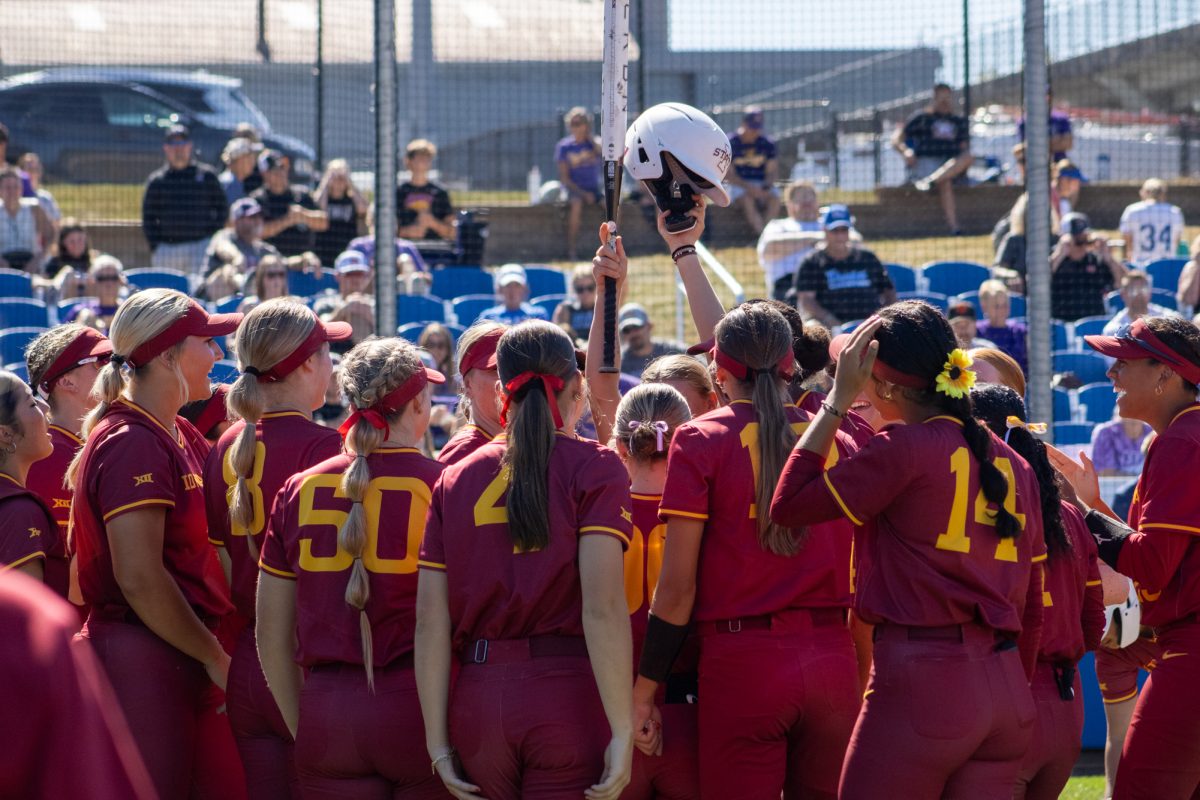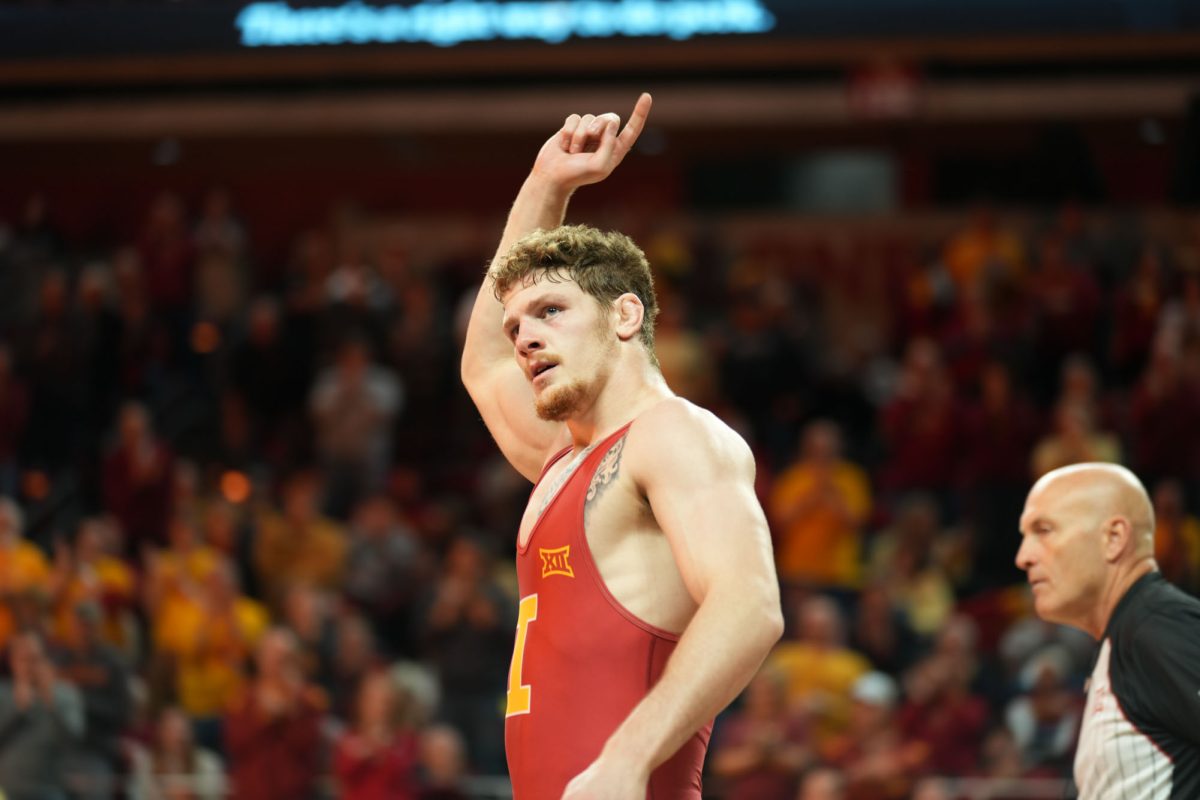Grade school children learn through Aero One

Tanner Gasow, senior in aerospace engineering, talks to fourth grade students from Meeker Elementary on October 12, 2009, in 2202 Howe Hall. The elementary students, Tyler Voas, left, Jessica Canon, Alexa Al-Hameed and Roma Baranov, are part of Aero ONE, a math and science group that meets with aerospace engineering students after school to learn about such topics as buoyancy. The group worked on designs for a boat. Photo: Whitney Sager/Iowa State Daily
October 12, 2009
A blond, wide-eyed girl with blue-rimmed glasses ate her French toast sticks while she explained why she likes science. She paused only to laugh when she heard the name Bob George.
Bob George is a rubber duck used to explain the concept of buoyancy, said Nickolas Davidson, one of the creators of a program called Aero One and senior in aerospace engineering.
Aero One is designed to “encourage and excite fourth- and fifth-grade students to pursue an engineering degree by introducing them to introductory engineering problems” according to the program’s goals and objectives.
ISU students serve as mentors to these elementary students.
“I think it is important because we are at a stage in our life where younger students like this love college students, especially local students,” Davidson said. “We’re automatically like heroes. We’re role models for them. [We can] show them ‘hey, you may hate math and science now, but it can be fun.’”
Aero One was created by three ISU engineering students, Nathan Johnson, Samantha O’Flaherty and Davidson, all seniors in aerospace engineering. The organization is funded by the department of aerospace engineering.
“This is a free program. Iowa State covers all the costs for the kids … so some kids that can’t afford to do extracurricular, this is something they can do,” said Lindsey Richey, fourth grade science teacher at Meeker Elementary School. “I’ve had several [students] say that, ‘Oh, I want to be an engineer’ or ‘I want to do that.’”
The program runs for four weeks. During the first week the students learn about a subject in science. They tour the ISU campus and some of the labs in Howe Hall including the structures and flow lab.
Last semester they learned about buoyancy, density and stability. In the second and third weeks, the elementary students participate in a project. They split up into teams. There are one or two ISU student mentors per team. Each team builds something to show what they learned.
“We learned about density and how to build a light weight boat that can hold a lot of weight,” said Meeker Elementary School fifth-grader Maria Werner Anderson who participated in the program in the spring of 2009.
Last semester the elementary students had to build a boat. The team with the lowest payload-to-weight ratio won. Anderson was on the winning team last year.
The boat her team created was made out of Styrofoam, plastic wrap, wooden dowels, glue and tape, Anderson said.
The winning team ate dinner with astronaut and ISU alumni Clay Anderson.
Aero One this semester is only available to fourth-grade students, but with expansion in the future, the program will have two fourth-grade sessions and two fifth-grade sessions.
“That’s when we’re fully operational,” Davidson said. “We wanted to be up to two sessions this semester. Do a fourth-grade session, then start a fifth-grade session, but it doesn’t appear like it will work out that way mainly because of funding and I don’t think we have enough mentors.”
Most of the mentors currently in the program are seniors, so the organization needs younger mentors to keep the program going.
Future concepts:
Mechanical engineering
System engineering
Flight by thrust
Winged flight
Magnets and renewable sources
Future projects:
Mouse trap car
Air or water powered rocket
Glider
Catapult
Maglev Train — a train which runs using electromagnets
Hovercraft






